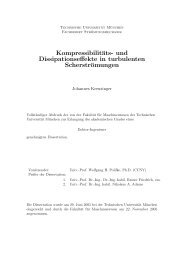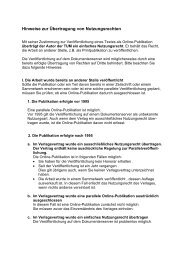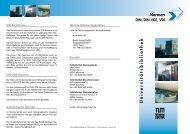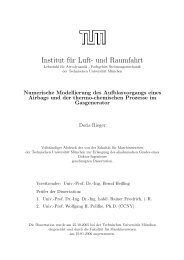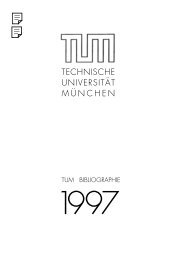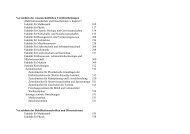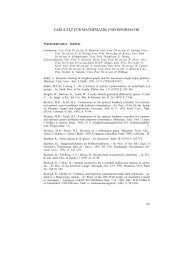LES of shock wave / turbulent boundary layer interaction
LES of shock wave / turbulent boundary layer interaction
LES of shock wave / turbulent boundary layer interaction
Create successful ePaper yourself
Turn your PDF publications into a flip-book with our unique Google optimized e-Paper software.
Simulation method<br />
exact filtered <strong>shock</strong> solution, where the high-<strong>wave</strong>number part <strong>of</strong> the<br />
spectrum has been removed, is slightly oscillatory owing to the Gibbs<br />
phenomenon.<br />
2.4 Boundary conditions<br />
Boundary data are imposed as follows. At inflow we prescribe all conservative<br />
variables f as function <strong>of</strong> time, using data from a separate<br />
computation. For the compression corner calculation results <strong>of</strong> a flat<br />
plate <strong>boundary</strong> <strong>layer</strong> calculation are used. This calculation in turn supplies<br />
inflow conditions for the decompression corner. The rescaling and<br />
recycling method <strong>of</strong> Stolz & Adams (2003) is employed for the flat plate<br />
simulation, see section 3 for a discussion. Periodic <strong>boundary</strong> conditions<br />
were applied in the spanwise direction. At the outflow a sponge-<strong>layer</strong><br />
technique is used (Adams, 1998). At the upper truncation plane <strong>of</strong> the<br />
computational domain non-reflecting conditions are imposed. The wall<br />
is assumed to be isothermal and no-slip conditions are enforced on the<br />
velocity. The wall-temperature distribution is uniform in spanwise direction,<br />
along the streamwise direction it is taken from the experiment<br />
<strong>of</strong> Zheltovodov et al. (1987), where the wall is supposed to be adiabatic.<br />
Since in this experiment the non-dimensional wall temperature on the<br />
flat plate has a small difference compared to that <strong>of</strong> the considered case,<br />
it was rescaled linearly. Then the data was smoothed and interpolated<br />
onto the computational grid as shown in figure 2.3. Isothermal conditions<br />
are preferable over adiabatic conditions since for the experiment an<br />
almost constant temperature distribution in time was observed during<br />
the measurements.



